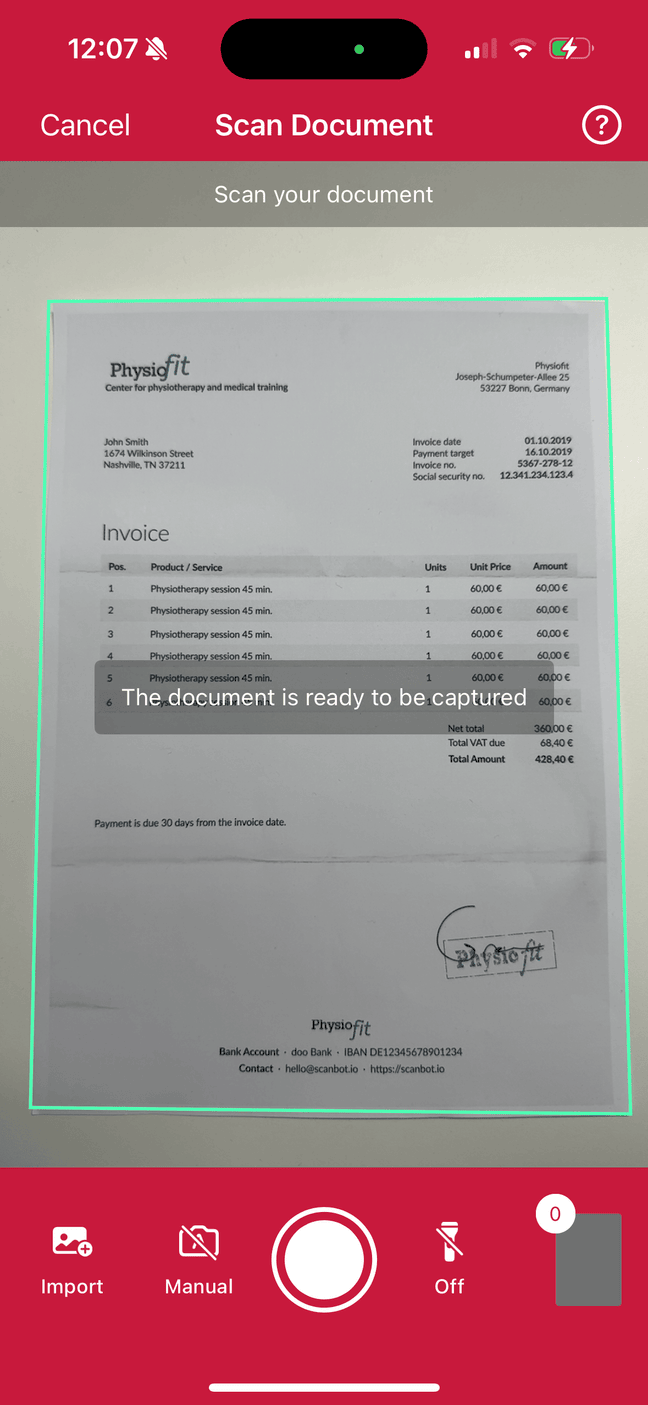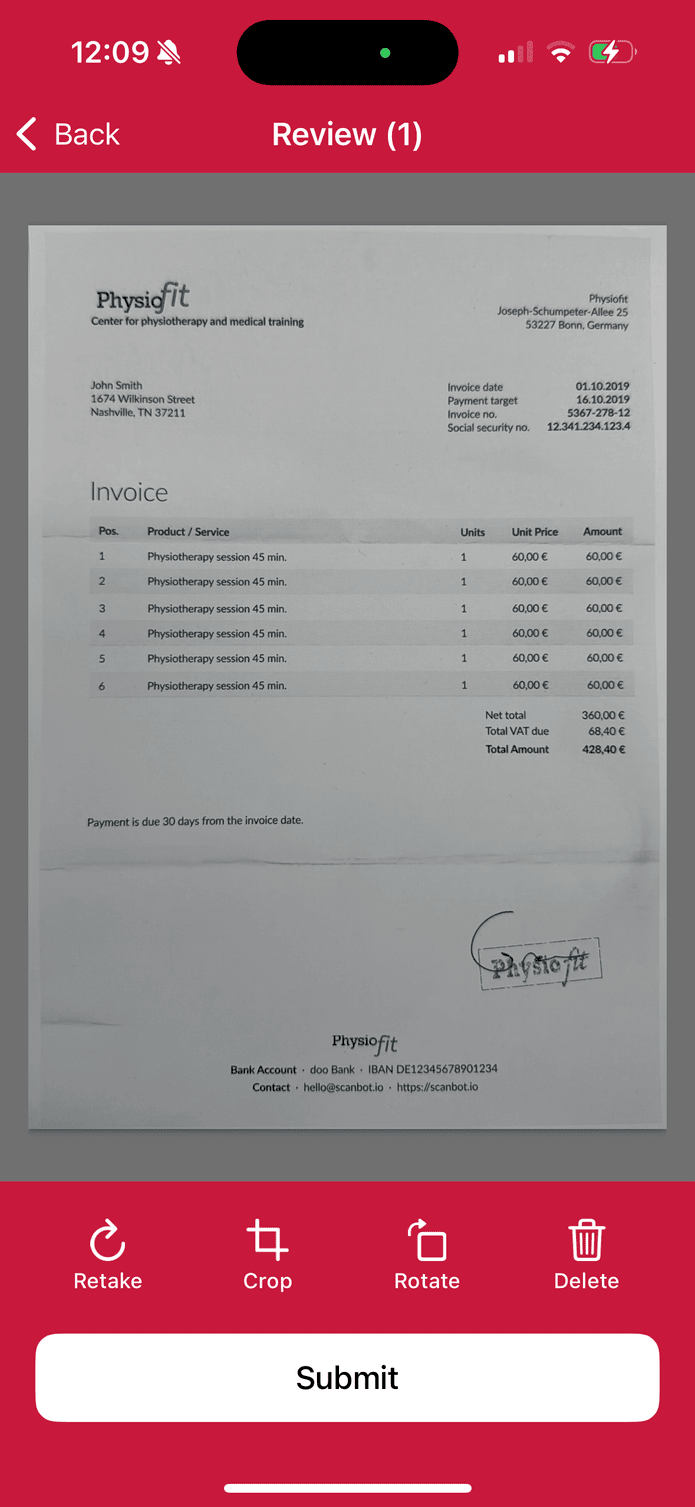Quick start | React Native Document Scanner



In this section, you'll learn how to set up the Scanbot React Native SDK for React Native in your app, with Document Scanning enabled, all within 10 minutes – thanks to our Ready-to-Use UI!
Installing Scanbot SDK module
The Scanbot SDK module is available as an npm package. To install the Scanbot SDK module you can run the following in your root project folder
- npm
- Yarn
- Expo
npm install react-native-scanbot-sdk
yarn add react-native-scanbot-sdk
npx expo install react-native-scanbot-sdk
Configure native projects
The Scanbot SDK needs access to the device camera, so it can scan from a live camera stream. Therefore, the camera permission must be defined.
Android
For Android, we need to add the camera permissions in android/app/src/main/AndroidManifest.xml
<uses-permission android:name="android.permission.CAMERA" />
<uses-feature android:name="android.hardware.camera" />
Note how we also added the uses-feature tag for better recognition of your app on the Google Play Store (see more).
Our Ready-to-Use UI Components handle the runtime permissions automatically, so there is no need to add anything else in the code.
iOS
For iOS, we need to include a description for the camera permission in ios/{projectName}/Info.plist anywhere inside the <dict> element:
<key>NSCameraUsageDescription</key>
<string>Describe why your app wants to access the device's camera.</string>
Expo
Integration with Expo is possible only when using a development build. The project is configurable using our config plugin or manually configure the native projects. To utilize the plugin you can add the following in your app config file:
"plugins": [
[
"react-native-scanbot-sdk",
{
"iOSCameraUsageDescription": "Document & Barcode Scanning permission",
"largeHeap": true,
"mavenURLs": true,
"ocrBlobsDirPath": "./ocr_blobs"
}
]
],
Initialize the SDK
Before using any feature of the React Native Scanbot SDK, we need to initialize it. Ideally, initialization should be done as soon as the app is launched, before any of the Scanbot SDK features are used.
Make sure to add the following import to the top of the file:
import ScanbotSDK from 'react-native-scanbot-sdk'
To initialize the SDK, simply use the initializeSDK function
ScanbotSDK
.initializeSDK({ licenseKey: "" })
.then(result => console.log(result))
.catch(err => console.log(err));
You can use the Scanbot React Native SDK for quick testing or evaluation purposes even without a license key. However, the SDK will only work for 60 seconds per app session and may not be used for production purposes. Want to scan longer than 60 seconds? Get your free trial license key here.
Start the Document Scanner and process the result
Our RTU UI components make it easy to deploy our Document Scanner SDK’s different scanning modes in your app.
To start our single page mode within a component, we are going to add our function:
loading...
Now, to launch the Document Scanner UI, you just call the useSinglePageScanning where needed.
For example, on onPress event of a button:
const onSinglePageScanning = useSinglePageScanning()
<Button title={"Start single page scanning"} onPress={onSinglePageScanning} />
🚀 That's it! 🚀 You have successfully integrated a full-featured document scanner as an RTU UI into your app.
💡 Customization: In this Quick Start guide, we use the default configuration for the scanner UI.
Feel free to explore the configs and customize the UI and behavior according to your needs via the DocumentScanningFlow class.
For more details, please refer to the Ready-to-Use UI page.
Want to scan longer than one minute?
Generate a free trial license to test the Scanbot SDK thoroughly.
Get free trial license